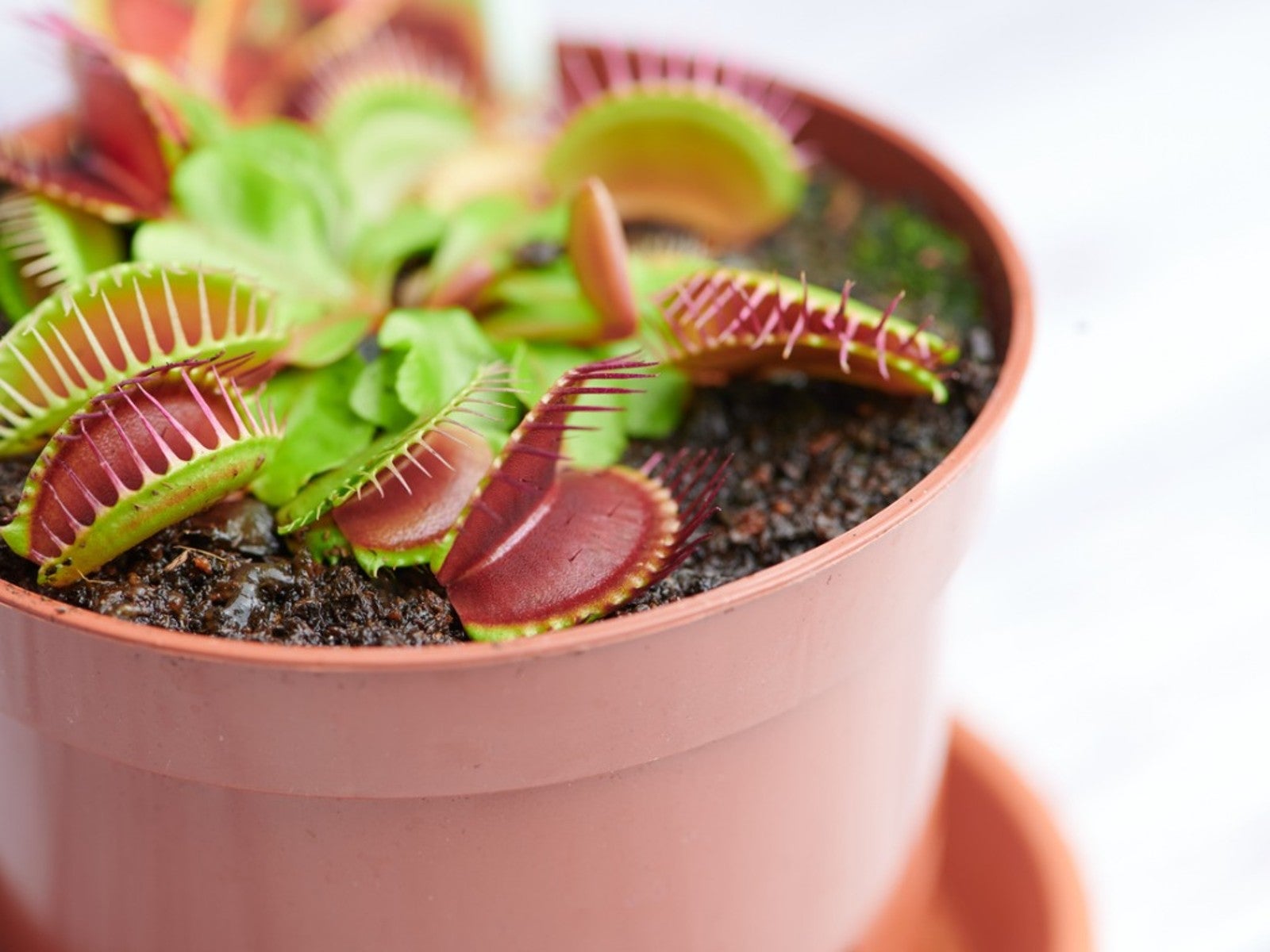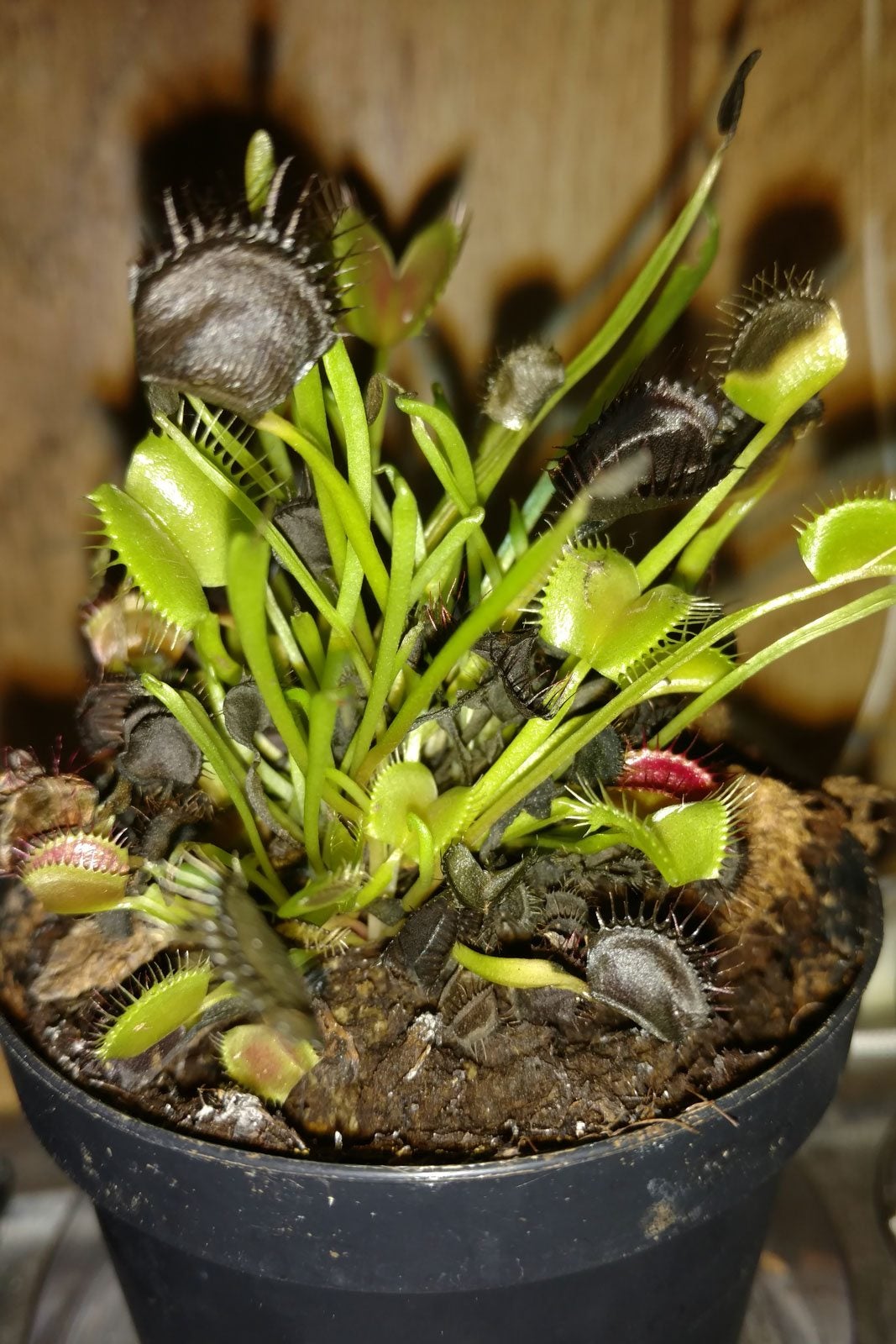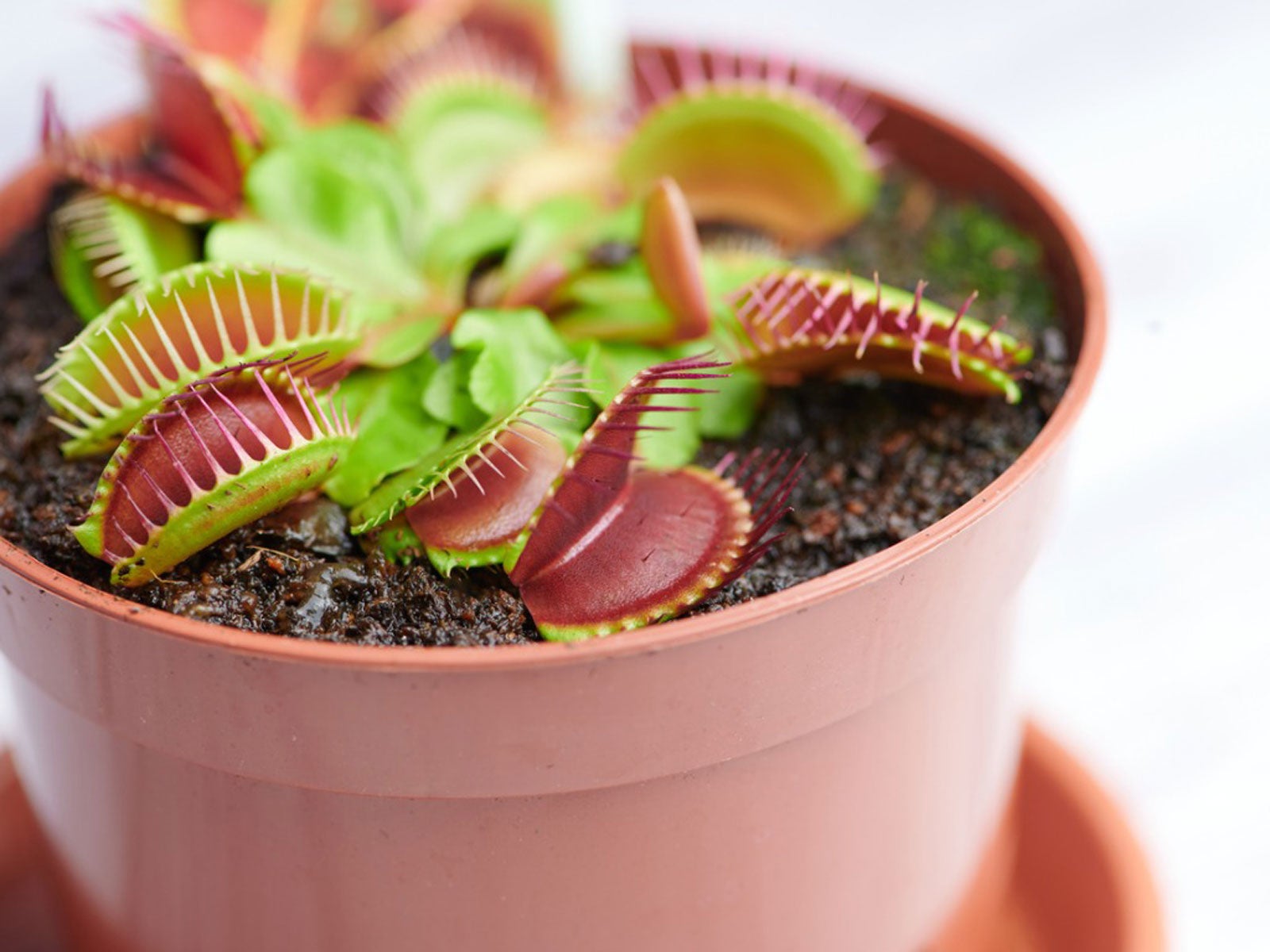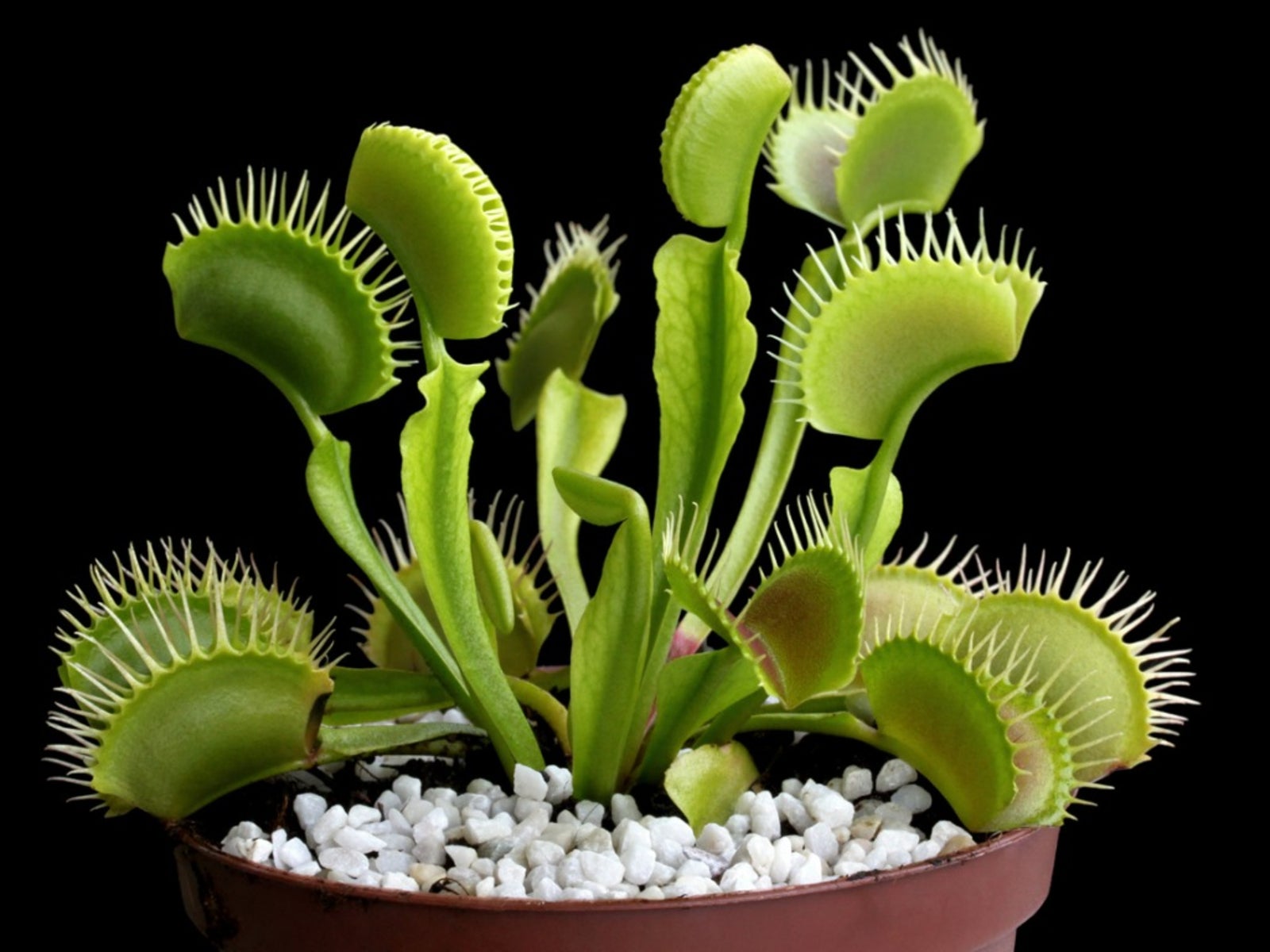Tips For Repotting Venus Fly Trap Plants


Carnivorous plants like the Venus fly trap are appealing but have very specific needs. They require a particular type of soil mix, lots of purified water, and a lot of humidity. One thing they do not need very often is a new pot. Only replant Venus fly traps every few years if they grow well.
About the Venus Fly Trap
This unique species of plant is one of just a few carnivorous plants that gets much of its energy from trapping and consuming animals, usually insects. The Venus fly trap is native to boggy savannas in North and South Carolina.
It grows in wet, sunny, humid conditions in soil that is slightly acidic and sandy. The native conditions for the fly trap are nutrient poor. The soil is poor, and the acidity makes it difficult for plants to take in nutrients.
They make up for this lack of nutrients by trapping and digesting insects. They do this using modified leaves that form a clamshell-like trap with sweet nectar that attracts insects. When an insect touches the bristles on the edges of the leaves, the trap swings shut, it releases digestive enzymes, and it consumes the insect.
When is Repotting a Venus Fly Trap Necessary?
One of the things a Venus fly trap is not particular about is space. Because it grows in a region with poor soil, it never grows extensive root systems. These shallow roots don’t need much depth or space.
If the plant is growing well and seems healthy, let it stay where it is. You can repot a Venus fly trap if it has been growing well in its container for two to three years and has gotten significantly bigger.
Transplanting a Venus fly trap is tricky, so don’t do it unless necessary. They get shocked easily and can die if you don’t do it right. Aside from repotting every few years for space, only repot if the plant is not doing well. This might occur in a few situations:
Gardening tips, videos, info and more delivered right to your inbox!
Sign up for the Gardening Know How newsletter today and receive a free copy of our e-book "How to Grow Delicious Tomatoes".
- You fertilized it without realizing that a Venus fly trap should never be fertilized.
- The plant is in standard potting mix.
- The roots have been infested by some type of pest.
How to Repot a Venus Fly Trap
Take great care when repotting this plant, which doesn’t appreciate being moved. Only do it when it is necessary and be gentle. The right time to repot your plant is in early spring as it begins to come out of winter dormancy.
Start by preparing the new container. If your plant was doing well, recreate the soil mix. If you aren’t sure what that mix is, here are some good options:
- A 50:50 mix of sand and peat
- A 50:50 mix of perlite and peat
- A 50:25:25 mix of peat, perlite, and sand
The peat is important because it provides acidity. Never use standard soil, potting mix, or compost for a Venus fly trap.
Fill the new container and mix with purified water to moisten it throughout. Carve out a hole the same size as the initial container. Gently remove the plant from the original pot and insert it into the new hole. Do not separate or divide the roots. Handle them as little as possible.
If you are transplanting because the Venus fly trap was exposed to standard potting mix or fertilizer, gently wash the roots in purified water before repotting. This will be stressful but is the only way to save the plant.

Mary Ellen Ellis has been gardening for over 20 years. With degrees in Chemistry and Biology, Mary Ellen's specialties are flowers, native plants, and herbs.
-
 Looking For Plants To Give You The Soft And Fuzzies? Try These 5 Fuzzy Leaf Plant Options
Looking For Plants To Give You The Soft And Fuzzies? Try These 5 Fuzzy Leaf Plant OptionsLovers of texture, drama, silver foliage and tactile plants will adore these special sensory garden additions. These fuzzy leaf plant options will leave you all aglow
By Susan Albert
-
 Get Ready For A Summer Of Hummers! Grow These Full Sun Hummingbird Plants and Flowers
Get Ready For A Summer Of Hummers! Grow These Full Sun Hummingbird Plants and FlowersIf you’re lucky enough to enjoy a sunny backyard, make sure you are maxing out on your pollinator opportunities and grow these full sun hummingbird plants and flowers
By Tonya Barnett
-
 My Venus Flytrap Is Turning Black: What To Do When Flytraps Turn Black
My Venus Flytrap Is Turning Black: What To Do When Flytraps Turn BlackVenus flytraps are enjoyable and entertaining plants. Their needs and growing conditions are quite different from those of other houseplants. Find out what this unique plant needs to stay strong and healthy, and what to do when Venus flytraps are turning black in this article.
By Jackie Carroll
-
 Venus Flytrap Problems: Tips On Getting A Venus Flytrap To Close
Venus Flytrap Problems: Tips On Getting A Venus Flytrap To CloseIf you are lucky enough to have one of these charmingly strange plants, you may have encountered some Venus flytrap problems - namely getting a flytrap to close. Discover what to do here.
By Amy Grant
-
 Grow A Venus Fly Trap: How To Care For A Venus Fly Trap
Grow A Venus Fly Trap: How To Care For A Venus Fly TrapCarnivorous plants are fun to grow and fascinating to watch and learn about. The Venus fly trap is a moisture loving plant that grows near marshes and bogs but makes a great houseplant. Learn more here.
By Bonnie L. Grant